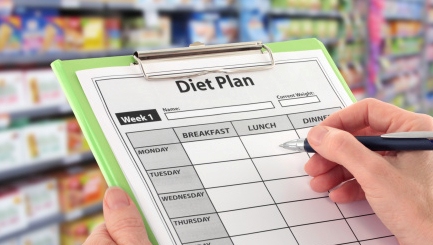What Should Your Dietary Goals Be When You Have Diabetes?
 For the sake of your wellbeing when you have diabetes, the right diet is crucial. With the right eating plan you can maintain stable blood sugar levels and preserve your overall wellness, and it’s not as difficult or unusual as it seems. A diabetes diet and a regular healthy eating plan often overlap, as both involve eating plenty of fruits and vegetables, simple carbohydrates in moderation, and fats sparingly.
For the sake of your wellbeing when you have diabetes, the right diet is crucial. With the right eating plan you can maintain stable blood sugar levels and preserve your overall wellness, and it’s not as difficult or unusual as it seems. A diabetes diet and a regular healthy eating plan often overlap, as both involve eating plenty of fruits and vegetables, simple carbohydrates in moderation, and fats sparingly.
Calorie counting is important for people with type 2 diabetes, as more food means higher blood sugar levels, as your recommended calorie guidelines varies depending on your gender, activity level, size and whether or not you are interested in weight loss. Your doctor or online sources can help you gauge the level of calories you should be aiming for.
When it comes to carbs, you can’t avoid them completely. Carbohydrates are your main source of energy, but they can lead to the biggest fluctuations in your blood sugar levels. Therefore, the type of carbs you choose are essential to your wellness. Your daily caloric intake should be 45-65% complex carbohydrates, or those that are rich in fibre, and most or all of them should be sourced from vegetables, beans, fruits, and whole grains. These foods are rich in fibre, which means you digest them more slowly and maintain a stable blood sugar level. Foods that contain sugar or refined flour are absorbed too quickly and can cause your blood glucose to spike, so limit your consumption of non-nutritious sugary foods, and replace soft drinks and sugary juices with water.
You also need to be wise in your choice of fats, as well as limiting them to only 25-35% of you daily calorie intake as fats contain more than double the calories of either carbohydrates or proteins. Saturates and trans fats raise your risk of heart disease, which is a high enough risk already when you have diabetes. This means avoiding foods like butter, cheese, red meat containing white ‘marbling’ or solid fat, and any oils that are hydrogenated, partially hydrogenated or solid at room temperature. Instead get your fats from monounsaturated or polyunsaturated sources, such as nuts, avocados, canola oil and olive oil, as these fats are good for your heart and can help raise your HDL or ‘good’ cholesterol levels.
Finally, let protein make up 12-20% of your daily calories, and lean meats, fish and low-fat dairy products help to stabilise your blood sugar since they take time to digest. Salt should be reduced as much as possible so as to not contribute to your potential high blood pressure and hypertension. This can be done with reducing your consumption of processed foods, and remembering to focus on healthy, high-fibre foods like fruits and vegetables.


Comments are closed.